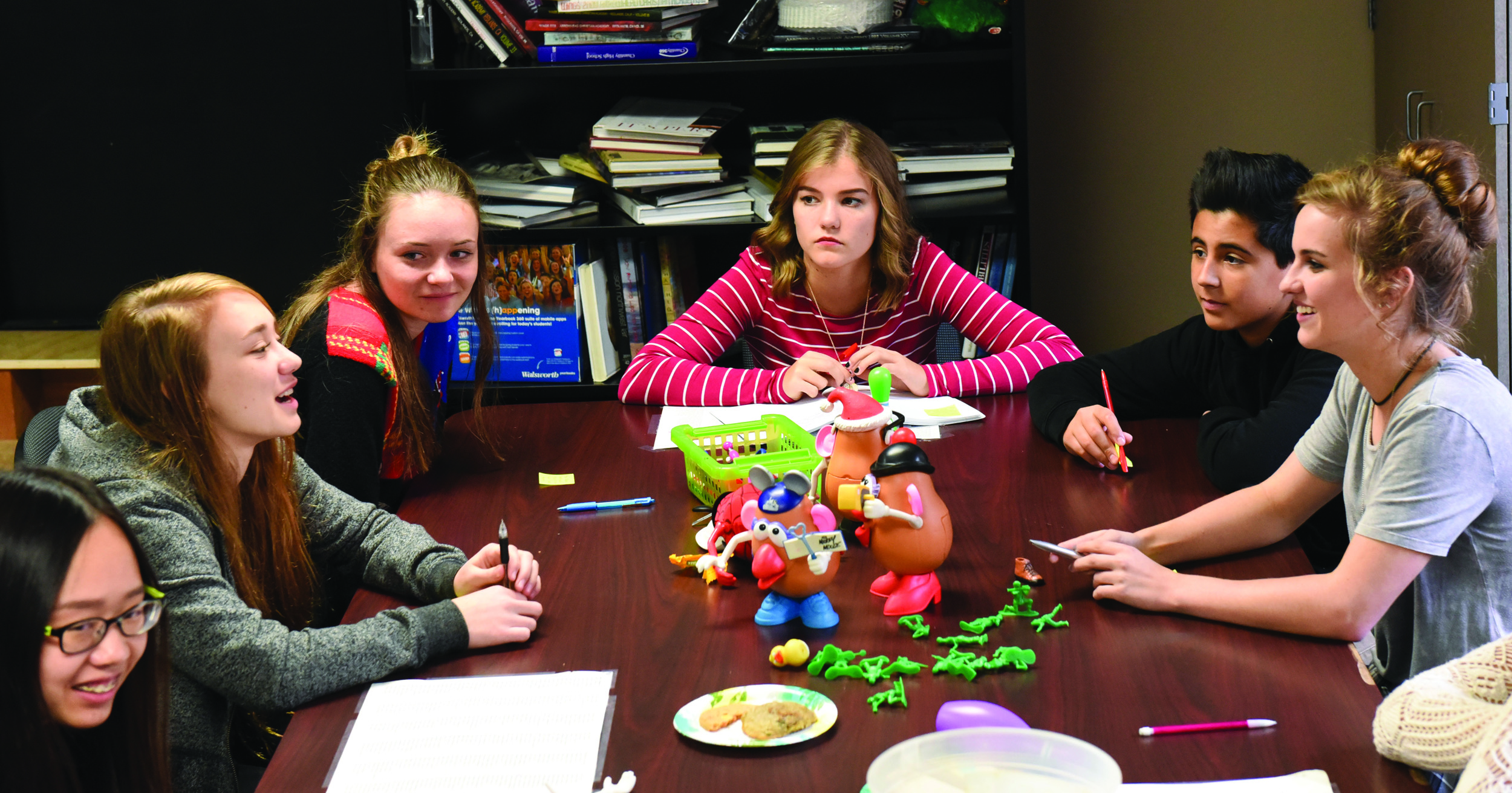
Storming the brain for a good idea
If we could momentarily suspend reality to see a goal, we would have a handle on brainstorming. But in a world consumed with promposals and calculus tests, closing our minds and tuning out the usual barrage of text messages that steal our focus might pose a challenge.
So how does one suspend reality? It’s a neat trick, and everyone can do it. It just takes a little bit of preparation and a dose of serendipity.
There are ways to make brainstorming more effective to achieve optimal results. Try these suggestions to generate ideas for everything from theme and coverage to dinners and fun activities.
- Think small. Really? “The more, the merrier” might work with beach parties or weddings, but when it comes to generating ideas, less is, well, more. Limit your group to no more than seven, and you’re more likely to hear from each of them. If you have a large staff, divvy them up into smaller groups and have them meet in separate locations so they don’t distract each other. When you pull the groups together, you will end up with lots of new ideas that would not have surfaced in one large group.
- Send an invitation. Use a little bit of personality to announce your big event. Give a hint of topics being explored but no need to be too specific. This will generate curiosity and inspire prospective collaborators to think ahead and come prepared. Advance planning should ward off some of those ”no such thing as dumb ideas.” Make a party of it. And don’t forget the M&Ms.
- Include a variety of voices. If everyone in the group thinks similarly, the ideas are likely to be nothing new. You need input from staff in different grade levels with different responsibilities and interests. Make sure each group has writers, designers, photographers and editors. If you really want to take a chance on new ideas, invite someone who is not on staff to join you. A variety of voices translates into a variety of ideas.
- Keep it short. Set a time limit. If it’s a class period, your hour is already set. Outside of class, make sure you don’t schedule more time than you need. An hour is plenty. People will submit their ideas within the time frame. Better to end the session with unfinished ideas and a place to start in the next session. Unexpressed thoughts will percolate and grow and be even more detailed and developed for the next session.
- Appoint a focused leader. Brainstorming works best when well directed. The group leader needs to know how to keep members on task without dictating. A lack of leadership will result in a free-for-all where nothing gets accomplished. The leader should also take notes. No one is going to remember everything. WRITE IT ALL DOWN!
- Limit distractions. No electronic devices, whatsoever. No iPhones, no watches. Zippity doo-dah. None.
- Throw in a surprise or two. Anything you do more than once runs the risk of becoming predictable. Ideas need to come from fresh places of unexpected inspiration and joy. In other words, make your sessions fun. And make them different each time. Remember to play. Have a few moments of planned silliness to get people breathing and laughing. Scatter toys around the room and invent games with them. Make cookies together without an oven (cookie dough is the best). Run up and down the hall singing “Bohemian Rhapsody.” It’s hard to be silent when you are having a good time.
- Include the tools of the trade. A generous supply of large sheets of paper, markers, scissors, stickers and crayons will encourage doodling and note taking. Not everyone comes to a session prepared to remember. Give your group a place to jot things down as they think of them, even if they are not expressed at the moment. Good ideas should never be forgotten.
- Treat ideas with respect. Whatever is shared is a gift. And just like those gifts that are not necessarily what you wanted (remember those tube socks from Aunt Ethel?), you still should show appreciation that something was given at all. Appreciation for ideas will encourage expression of more ideas. Eventually you will land on a winner. Even a mediocre thought can benefit from expression. Allow the group to elaborate on it and improve it.
- Jump-start if necessary. If ideas are coming slowly, give everyone in the group a single small Post-it® Note and a pen. Introduce the topic, and let people ask questions and talk about the possibilities. Set a timer for three minutes of independent thinking. Then have each person write quietly for one minute on his or her Post-it. This forces simplification – a hallmark of a great idea – and forces each person to express something. Have everyone pass the Post-it note to their left and go around the room reading someone else’s idea out loud. Repeat as desired, perhaps varying the parameters for who reads whose note.
- Schedule a follow-up meeting. This might be the most important point of all. The original session has ended, but ideas are just starting to take off. Let the group know that there will be another gathering in a day or two to expand on what made the most impact or to express new, retrospective thoughts. This need not be a long session, but it is an essential step to completing the entire process. The leader might also create a group email or some kind of digital forum where ideas can continue to be shared.
- Give thanks. A personal chat, text or email will let your group know their time and input is appreciated. Your valuing of their thoughts and ideas will encourage future participation.
Use some type of digital forum to save brainstorming ideas for the future. These would include Google Drive or a group email or chat. Make sure everyone has access to the forum.
Tag:Yearbook Ideas



